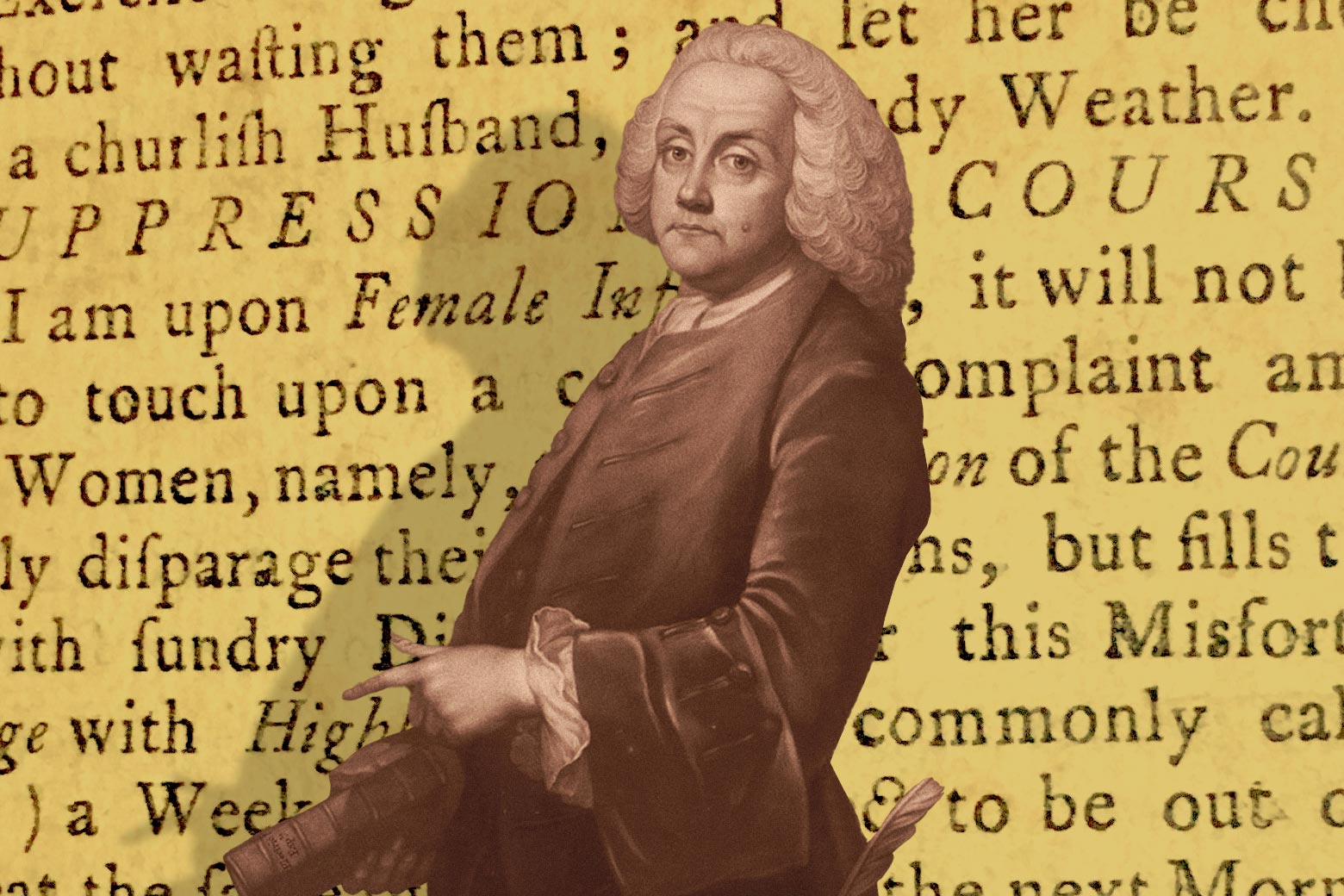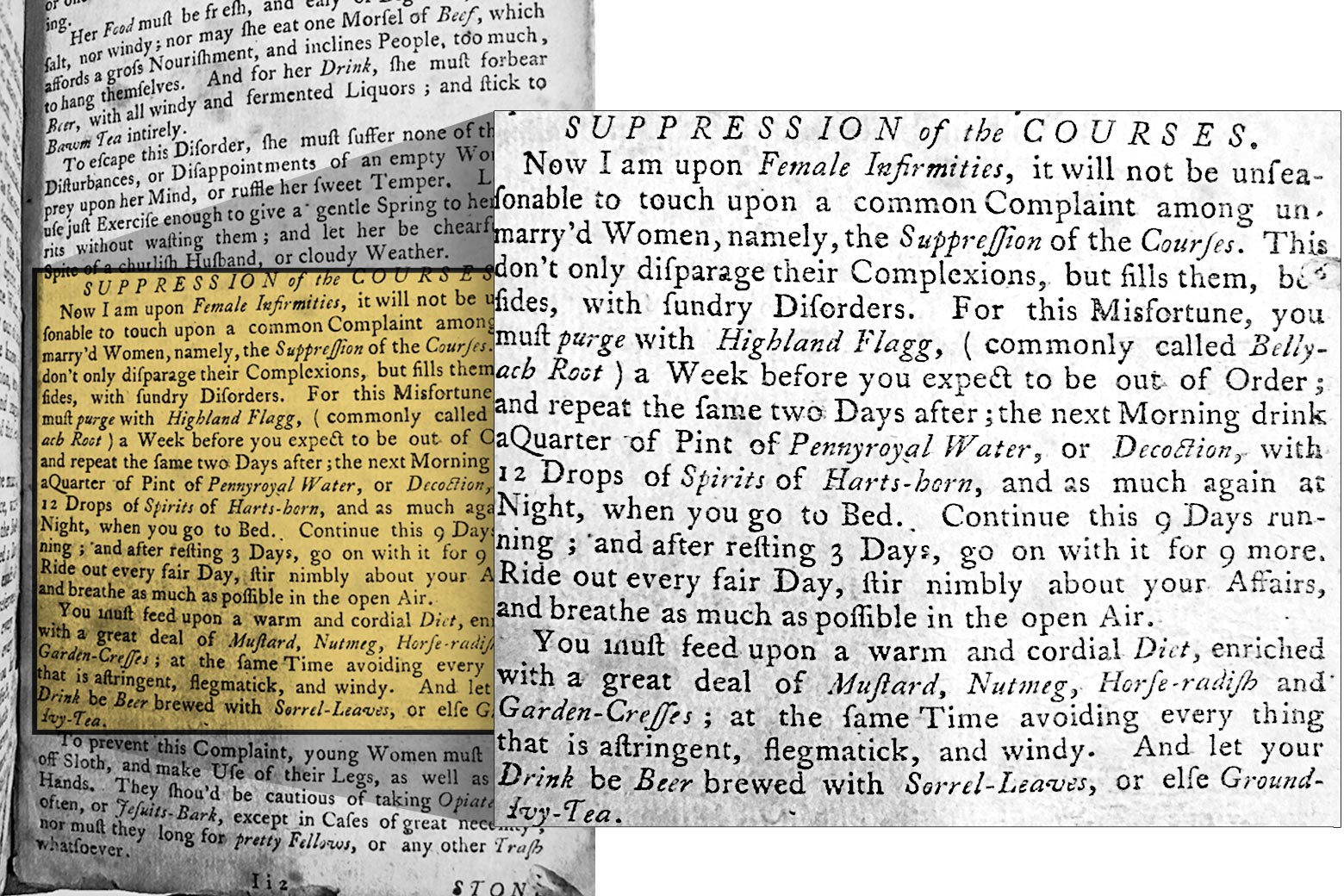Ben Franklin’s Abortion Recipe (original) (raw)
Ben Franklin Put an Abortion Recipe in His Math Textbook
To colonial Americans, termination was as normal as the ABCs and 123s.

Photo illustration by Slate. Image of Ben Franklin via U.S. National Archives. Background courtesy American Antiquarian Society.
The year was 1748, the place was Philadelphia, and the book was The Instructor, a popular British manual for everything from arithmetic to letter-writing to caring for horses’ hooves. Benjamin Franklin had set himself to adapting it for the American colonies.
Though Franklin already had a long and successful career by this point, he needed to find a way to convince colonial book-buyers—who for the most part didn’t even formally study arithmetic—that his version of George Fisher’s textbook was worth the investment. Franklin made all sorts of changes throughout the book, from place names to inserting colonial histories, but he made one really big change: adding John Tennent’s The Poor Planter’s Physician to the end. Tennent was a Virginia doctor whose medical pamphlet had first appeared in 1734.* By appending it to The Instructor (replacing a treatise on farriery) Franklin hoped to distinguish the book from its London ancestor. Franklin advertised that his edition was “the whole better adapted to these American Colonies, than any other book of the like kind.” In the preface he goes on to specifically mention his swapping out of sections, insisting that “in the British Edition of this Book, there were many Things of little or no Use in these Parts of the World: In this Edition those Things are omitted, and in their Room many other Matters inserted, more immediately useful to us Americans.” One of those useful “Matters” was a how-to on at-home abortion, made available to anyone who wanted a book that could teach the ABCs and 123s.
In this week’s leaked draft of a Supreme Court opinion overturning Roe v. Wade, Justice Samuel Alito wrote, “The inescapable conclusion is that a right to abortion is not deeply rooted in the Nation’s history and traditions.” Yet abortion was so “deeply rooted” in colonial America that one of our nation’s most influential architects went out of his way to insert it into the most widely and enduringly read and reprinted math textbook of the colonial Americas—and he received so little pushback or outcry for the inclusion that historians have barely noticed it is there. Abortion was simply a part of life, as much as reading, writing, and arithmetic.
_[_Read: Alito’s Leaked Draft Fully Overruling Roe Is Unprecedented]
Franklin wasn’t even the first issuer of a math textbook on either side of the Atlantic to include among its materials a recipe for abortion, though his book certainly had the most reliable and explicit one. William Mather’s 1699 Young Man’s Companion also has one (the London book would inspire the very first arithmetic book to be printed in the colonies in 1705, by Franklin’s old boss Andrew Bradford). In Mather’s book, though, the recipe was short, misleading, and ineffective. It includes an entry for “Terms provoked,” a heading also found under comparable medical books with abortifacient concoctions (where the “term,” or period, needs “provoking”). Unfortunately for Mather’s readers, however, he prescribes “stinking Arach,” or goosefoot, which is an emmenagogue (an agent to stimulate or regulate menstruation) but not a reliable abortifacient. He also makes the even more dubious suggestion to “take a draught of White wine” under a full moon.

From The American Instructor. The malady being addressed is suppressed courses, or menses, due to pregnancy. Photo illustration by Slate. Page from The American Instructor courtesy American Antiquarian Society.
But Franklin’s choice to get Tennent’s pamphlet into the hands of readers all over the colonies meant that anyone learning to read, write, and calculate with his book would also have access to the leading available treatment for ending a pregnancy. Tennent’s handbook prescribes angelica, an herb known to be an effective abortifacient in the early stages of pregnancy for thousands of years, and which was frequently recommended across early modern herbal books.* Moreover, the recipe refers to several herbal abortifacients known at the time:
For this Misfortune, you must purge with Highland Flagg, (commonly called Bellyach Root) a Week before you expect to be out of Order; and repeat the same two Days after; the next Morning drink a Quarter of Pint of Pennyroyal Water, or Decoction, with 12 Drops of Spirits of Harts-horn, and as much again at Night, when you go to Bed. Continue this 9 Days running; and after resting 3 Days, go on with it for 9 more.
The entry combines attention to potent herbs with careful accounting of dosage to treat the “misfortune.” Here the entry recommends acting early before someone might “expect to be out of order” with their next period. This is consistent with the timing for maximum efficacy for angelica, aka “Bellyach Root,” a plant member of the carrot family. Likewise, pennyroyal was known even to the ancient Greeks as a form of birth control; “Harts-horn,” or century plant, was also commonly recommended at the time as part of concoctions for abortions and expelling afterbirth. The entry concludes by advising that the patients “shou’d be cautious of taking Opiates too often, or Jesuits-Bark”—a remedy for malaria sometimes mistakenly thought to be an abortifacient—and just in case anyone was not clear on what caused this malady, “nor must they long for pretty Fellows, or any other Trash whatsoever.” So: avoid sex.
The recipe details, moreover, assume that these “unmarry’d Women” had the kind of knowledge of arithmetic that the book’s earlier instructional sections had taught. The recipe insists on careful attention to measurement and counting. And it asks the preparer to work with repeated multiples of three. Franklin had a track record of promoting female education, and of arithmetic for them in particular. He advocates for it in his early, anonymous “Silence Dogood” articles, and in his Autobiography singles out a Dutch printer’s widow who saved the family business thanks to her education. There, Franklin makes an explicit call “recommending that branch of education for our young females.” He likely hoped that his American Instructor would reach audiences that included women and girls; and based on his choice of which medical book to reprint, he may also have understood that the Dutch widow would have needed to know how to end an unwanted pregnancy just as much as she would need to know how to balance an account book.
In a 1760 edition of The American Instructor held by the American Antiquarian Society, a reader has pulled out the page that included the abortion recipe, either to save it from or to save it for prying eyes. Another copy, held at the Huntington Library in San Marino, California, shows that the Gilbert family treasured the book so much that they used it as kind of a family Bible starting in 1755, with Thomas Gilbert entering the names and birthdates of his children into it, even including the five-day duration of Rachel Gilbert’s labor with their daughter Sarah. Births, abortions, arithmetic—all of them were wrapped up together and taken for granted in this colonial American book, which thanks to Franklin circulated far and wide and for generations, including among enslaved Americans. In 1771, two Black men, both fugitives from enslavement, left at night from Nanjemoy, Maryland, in search of freedom and took with them a gun, powder, and two books, one of which was “Fisher’s Arithmetick.”
As an early American literary critic who works on the history of numeracy, I thought of Franklin’s book multiple times while I read the news this past week. Florida legislators want to excise social and emotional learning exercises from math textbooks for children, as though presenting arithmetic without context has ever been helpful or even the norm. And now, should some version of this draft Supreme Court opinion hold, the ruling on Dobbs v. Jackson Women’s Health will render abortion effectively illegal for myself, my students, and my daughters here in central Ohio, where new Intel factories are about to require tens of thousands of workers with advanced quantitative skills. For many of us, abortion access is an essential part of STEM education. It keeps us in school; it keeps the kids we already have fed and housed while they’re in school. And it is simply health care—like treatment for the umpteen other maladies listed in the colonial medical handbook.
Alito’s draft argues that “Roe and Casey must be overruled,” pointing out that “the Constitution makes no reference to abortion.” Maybe so, but for the Framers’ contemporaries who learned to count with Franklin’s help, safe and accessible abortion was a matter of simple math.
Correction, May 5, 2022: This article originally misidentified John Tennent as James Tennant and misstated the year his medical pamphlet appeared.